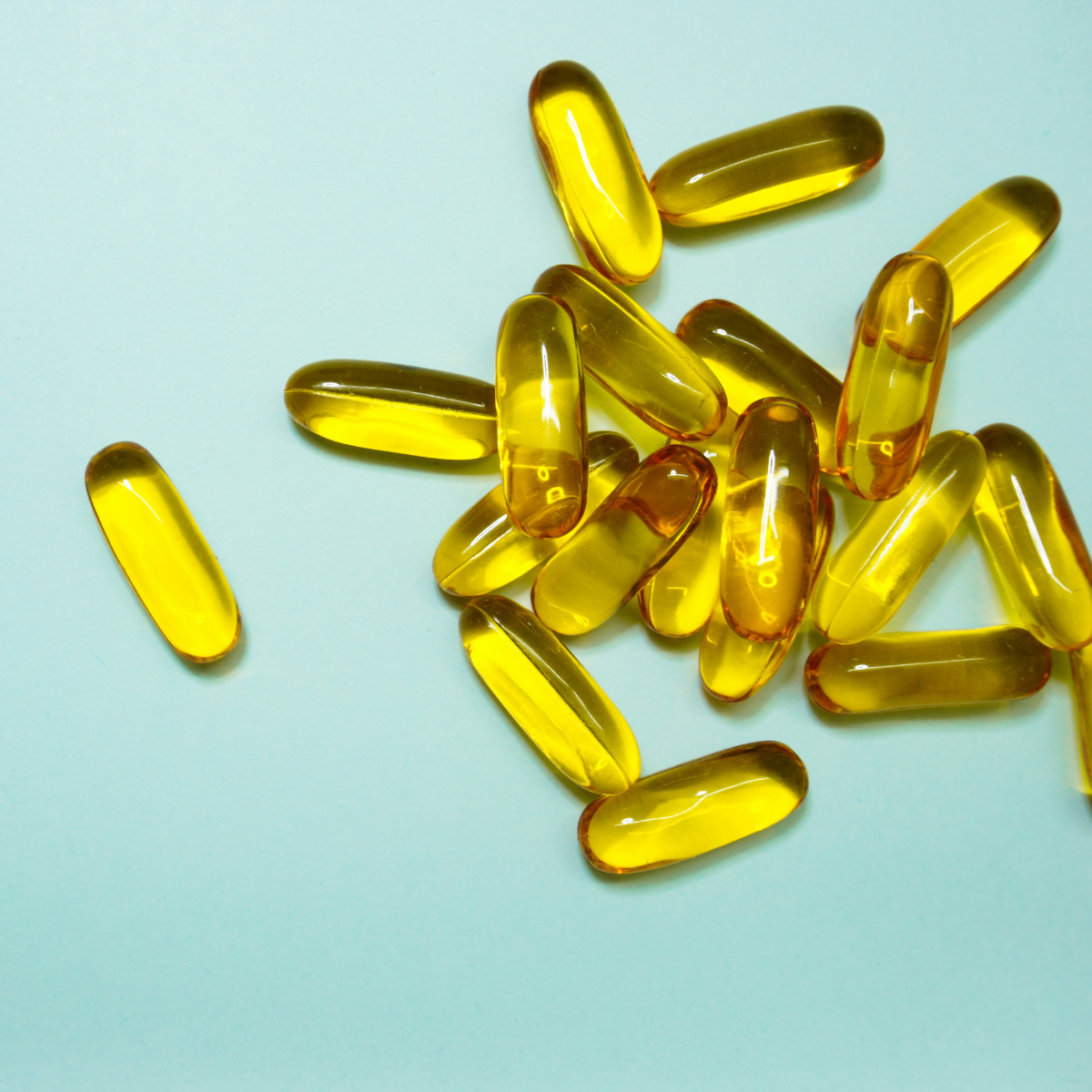There has been SO MUCH buzz on seed oils lately that I felt the need to help everyone better understand this misunderstood group of fatty acids. Look, we need these essential fats because they play a crucial role in maintaining overall health — inflammation is literally the root cause of most diseases.
Omega-3 vs. Omega-6: Understanding the Balance and Its Impact on U.S. Health
In the realm of nutrition, omega-3 and omega-6 fatty acids are essential polyunsaturated fats that play pivotal roles in maintaining health. However, the balance between these two fatty acids in the American diet has shifted dramatically over the past century, potentially contributing to various chronic diseases.
What Are Omega-3 and Omega-6 Fatty Acids? 
Omega-3 Fatty Acids
These include α-linolenic acid (ALA), eicosapentaenoic acid (EPA), and docosahexaenoic acid (DHA). They are primarily found in fatty fish, flaxseeds, chia seeds, and walnuts. Omega-3s are known for their anti-inflammatory properties and are crucial for heart, brain, and eye health.
Omega-6 Fatty Acids
The most common omega-6 fatty acid is linoleic acid (LA), found in vegetable oils like soybean, corn, and sunflower oils, as well as nuts and seeds. While omega-6s are essential for health, they can promote inflammation when consumed in excess relative to omega-3s.
Let me make it easy on you. Think: leaves versus seeds. Seed (soy, corn, sunflower, etc.) oils are Omega 6. Leaves (ocean leaves which is algae) consumed by animals/fish produce Omega 3.
The Problem: Lack of Balance
Historically, humans consumed omega-6 and omega-3 fatty acids in a balanced ratio, estimated to be around 1:1. However, modern Western diets, particularly in the United States, have seen a significant increase in omega-6 intake:
- Omega-6 Intake: Over the last 100 years, the intake of linoleic acid in the United States has more than doubled, primarily due to the increased consumption of omega-6-rich seed oils like soybean, corn, and safflower oils.
- Omega-3 Intake: In contrast, the intake of marine omega-3s has decreased from approximately 660–14,250 mg/day during the Paleolithic era to just 100–200 mg/day today.
This dietary shift has led to an average omega-6 to omega-3 ratio of about 20:1 in the U.S., compared to the ancestral ratio of 4:1. YIKES!
Unbalance Means Poor Health!
An elevated omega-6 to omega-3 ratio is associated with several health concerns due to inflammation:
- Inflammatory Diseases: Excessive omega-6 intake can lead to increased production of pro-inflammatory molecules, contributing to conditions like rheumatoid arthritis, asthma, and inflammatory bowel disease.
- Cardiovascular Disease: While omega-6 fatty acids can lower LDL cholesterol, an imbalance with omega-3s may still increase the risk of heart disease.
- Cancer Risk: Some studies suggest that a higher omega-6 to omega-3 ratio may be linked to an increased risk of certain cancers, including breast cancer.
- Mental Health Disorders: Chronic inflammation associated with an imbalanced fatty acid ratio may contribute to mood disorders such as depression and anxiety.
What Are Omega-3 Fatty Acids and Where Can I Get More?
Omega-3 fatty acids are a group of polyunsaturated fats that are essential for human health. “Essential” means your body can’t produce them on its own—you have to get them through your diet.
The three most important types are:
- ALA (alpha-linolenic acid): Found in plant oils like flaxseed, chia seeds, and walnuts. Unfortunately, the conversion rate is super low (see below)… sorry vegans.
- EPA (eicosapentaenoic acid): Found in fatty fish and fish oil.
- DHA (docosahexaenoic acid): Also found in fatty fish and crucial for brain and eye health.
DHA vs EPA (Straight from Fish): We Need a Ratio of 12:18!
DHA: “Brain support.” DHA and arachidonic acid (AA) are the most abundant fatty acids in brain phospholipids. DHA crosses through the placenta and is vital for growth, brain, CNS, and retina development in the womb.
EPA: “Anti-inflammatory” by interfering with Omega 6. EPA protects our genes, regulates stress response, and helps prevent chronic illness.
Farm-Raised Fish vs. Wild
The Vegan Dilemma: If ethics drive your vegan or vegetarian lifestyle, I get it — but if you avoid fish for health reasons, know this: the only plant-based omega-3 is ALA (flax, hemp, pumpkin seeds, walnuts) and the conversion to EPA/DHA is very poor (less than 5% to EPA, less than 0.5% to DHA). Fish oil provides up to 200 times more EPA and DHA per gram than flax. For vegans, algae-based omega-3 supplements are a great alternative.
Best Sources of Omega-3s
Animal-Based Sources:
- Salmon
- Mackerel
- Sardines
- Anchovies
- Cod liver oil
- Oysters
Plant-Based Sources (ALA):
- Flaxseeds and flaxseed oil
- Chia seeds
- Walnuts
- Hemp seeds
- Canola oil
- Edamame
Health Benefits of Omega-3s
- Heart Health: Omega-3s help lower triglycerides, reduce blood pressure slightly, and prevent harmful blood clots. They reduce risk of heart disease and stroke.
- Brain Function and Mental Health: DHA is a major brain component. Omega-3s link to reduced risk of depression, anxiety, and cognitive decline. I swear by them for managing my ADHD symptoms!
- Eye Health: DHA supports retina health. Adequate omega-3 intake lowers risk of macular degeneration and dry eyes.
- Inflammation: Omega-3s are anti-inflammatory and may reduce symptoms of arthritis, IBD, and even acne.
- Pregnancy and Infant Development: Omega-3s support fetal brain growth, reduce risk of developmental delays, low birth weight, and postpartum depression.
How Much Do You Need?
My favorite brand, Innate Choice, recommends: 720-825 mg of EPA and 480-550 mg of DHA daily. These levels are crucial for preventing illnesses like heart disease, arthritis, depression, stroke, cancer, diabetes, high blood pressure, obesity, and more. Pregnant and breastfeeding women typically need higher DHA amounts.
Should You Take a Supplement?
Honestly, YES.
“But Dr. Jamie, I eat a lot of fish!” — Unless it says “WILD”, you’re likely eating farm-raised fish fed corn, not algae, which produces Omega 6, not Omega 3. Don’t be fooled by “Atlantic” fish at markets and restaurants—it doesn’t mean wild, but farm-raised from Atlantic lineage.
Bottom line: With seed oils in EVERYTHING, you don’t eat enough wild fish. Just supplement.
What to Look for in a Supplement?
- 18:12 EPA to DHA Ratio
- Ultra purified, small cold-water fish source
- Pharmaceutical Grade
- Non-chemical molecular distillation process (removes heavy metals, PCBs, pesticides)
- No artificial sweeteners
- Third-Party Tested
Check out Innate Choice – my go-to brand for omega-3 supplements.
Use my affiliate code for 20% off your purchase: DRJAMIE




